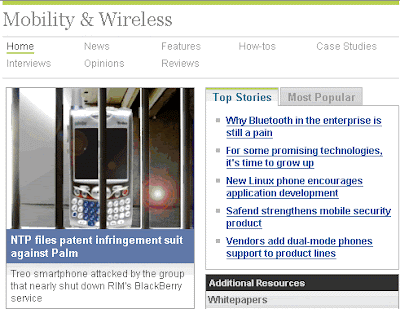As a journalist at Computerworld Australia:
Ever thought of throwing in the towel with the tired 9 to 5 work regime of the real world? West Australian IT student Adam Frisby found his escape in the virtual economy of Second Life.
The virtual world was originally created by Linden Labs as a social experiment, and now hosts more than 1.5 million residents who, in total, spend about US$650,000 per day. Second Life's entire economy is currently worth over 1 billion Linden dollars (L$), which converts to roughly AUD$54 million via the game's own stock exchange.
Much like how real-world commerce operates, Linden dollars are used in-game for the buying and selling of land, goods and services. Second Life allows its residents to build literally anything they can imagine, using its developing tools and a C/Java-style language called the Linden Script Language.
For a skilled programmer, creating items in Second Life can be a job that offers variable hours, room for creativity, and huge potential for profit. Frisby, who is known in-world by his moniker 'Adam Zaius', is a Second Life entrepreneur whose business is expected to reap revenues in excess of AUD$1 million during the next 12 months.
Liz Tay speaks with Frisby about his Second Life as real estate developer.
How does your job work?
I run an Australian business called DeepThink with a Canadian business partner. We provide real estate (regions) inside Second Life which people can lease from us. Our biggest project is the Azure Islands which has over 100 regions, simulating an area larger than several small nations.
How much time do you spend working in-game?
It depends on the day - a lot of the work I do is spontaneous - on busy days I can spend up to 18 hours logged in, on quiet days as little as one or two. We now have four people on contracts with us to help out with the volume of work, but even still there's a lot that needs to be done.
What is your average day like?
I usually wake up at around 3AM so I can catch the end of the US business day. At the start of the day, I answer any messages that have been sent to me overnight while sleeping - from then on, it's designing new regions. I usually get through one or two new regions each day. There's a bit of everything required - programming and scripting for interactivity, texture design using Adobe Photoshop, modeling and terraforming using the client's own tools. There's certainly a market which would let us outsource these things, but we prefer to keep them 'in house'.
How much money is there to be made in Second Life?
The amount of money you can make is directly tied to real world skills - texturing skills, programming, etc. An established clothing designer I know makes around US$80,000 a year on a catalogue with more than 1,000 items. There's very little in the way of hourly contract jobs outside of a few small groups - but there's plenty of room for entrepreneurial activity if you can stand the hours.
How does your Second Life job compare with a standard 9-5 job?
It's not your average desk job - that's for certain, the great side is you get to work with a lot of interesting people from all over the globe; and there really is nothing else like the Second Life platform - you get to work on the cutting edge of Internet applications in a creative way. The downside is it's risky; at any moment everything could explode; Linden Labs could go bankrupt, and you would be out with nothing.
The best part of the job is we get to be really creative: we get to build entire worlds from scratch, and we have people going crazy over them. Pretty much everything we build gets a really great positive reaction from people. We have people lined up waiting for us to finish projects and let them in.
I don't think we've had any particularly bad incidents ... the worst I can think of is the odd bit of harassment to our residents we have to clean up after.
What first attracted you to the job?
I started using Second Life as a recreational activity - [drawn by] the lure of being able to program and see your results in a 3D environment 'live' - I had come over from a similar but older environment in January 2004. Back then, there weren't any moneymaking opportunities as the in-world currency was worthless.
Around early 2005, the currency picked up real tangible value. It took us awhile to realise it; but we started several projects mid-way through the year, including the Azure Islands; which has grown at an exponential rate ever since. My business partner, Alex, has been in since 2002 as an alpha tester.
Do you know of many other people who make money from Second Life?
There's around 200 people in Second Life who make more than US$1,000 a month, of that I would estimate around 20 of them make enough for a full time living, and of that around five who make more than US$200,000/year in revenue. There are a lot of creative people who are being noticed and hired by big businesses to build them a presence inside of Second Life; there's been a fantastic amount of growth this year. Second Life is on track for 2 million accounts by Christmas.



